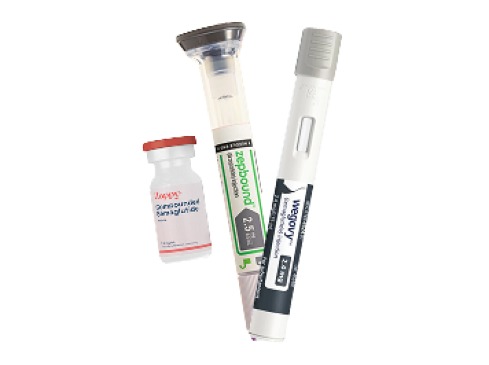Estimated reading time: 7 minutes
Key Takeaways
- Semaglutide is a GLP-1 receptor agonist used for weight loss.
- Combining semaglutide with proper nutrition can enhance weight loss results.
- Smart dietary choices can help manage common side effects like nausea and bloating.
- A balanced diet with lean proteins, high-fiber foods, and healthy fats is recommended.
- Mindful eating and proper hydration are essential for success.
If you’ve recently started semaglutide for weight loss, understanding what to eat while on semaglutide is crucial for maximizing your results and minimizing side effects.
This comprehensive guide will help you create an optimal eating plan that works seamlessly with your medication. For a comparison of weight loss solutions, see
Zepbound vs Ozempic: Comparing Weight Loss Solutions and Benefits.
Introduction
Semaglutide, a GLP-1 receptor agonist approved for weight loss, has revolutionized obesity treatment by helping people feel fuller longer, reducing appetite, and naturally lowering calorie intake.
While the medication is powerful on its own, combining it with proper nutrition can significantly enhance your weight loss journey and help manage potential side effects.
To determine if Zepbound is right for you, refer to our Is Zepbound Right for Me? A Complete Guide to Eligibility and Treatment.
In this guide, you’ll learn exactly what to eat (and what to avoid) while taking semaglutide, along with practical meal plans and strategies for success.
Understanding How Semaglutide Works
Semaglutide works by mimicking GLP-1, a natural hormone that regulates appetite and digestion. When you take semaglutide, it:
- Activates brain receptors that control hunger
- Slows down stomach emptying
- Increases feelings of fullness
- Reduces overall appetite
These effects can lead to impressive results, with many patients losing up to 15% of their body weight. Beyond weight loss, semaglutide offers additional benefits like
improved metabolic health and better glucose control. For more insights into ordering your medication, visit our guide on
How to Order Compounded Semaglutide Online.
However, some users experience side effects, particularly early in treatment:
- Nausea
- Bloating
- Digestive discomfort
The good news? These side effects can often be managed through smart dietary choices. Learn more about managing these in our post on
Zepbound vs Ozempic: Comparing Innovative Treatments for Weight Loss and Diabetes Management.
Best Diet for Weight Loss with Semaglutide
Key Principles
Balanced Nutrition
Focus on incorporating:
- Lean proteins
- High-fiber foods
- Healthy fats
- Complex carbohydrates
For personalized meal planning, explore our Zappy Health Weight Loss Program.
Portion Control
With semaglutide’s appetite-suppressing effects, you’ll likely feel satisfied with smaller portions. Take advantage of this by:
- Eating smaller, more frequent meals
- Using smaller plates
- Paying attention to portion sizes
Mindful Eating and Hydration
– Drink plenty of water throughout the day
– Eat slowly and without distractions
– Listen to your body’s hunger and fullness cues
What to Eat While on Semaglutide
Recommended Foods
Lean Proteins
- Chicken breast
- Fish (salmon, cod, tilapia)
- Turkey
- Eggs
- Greek yogurt
- Tofu and tempeh
Non-Starchy Vegetables
- Leafy greens (spinach, kale)
- Broccoli
- Bell peppers
- Cauliflower
- Zucchini
- Asparagus
Whole Grains
- Quinoa
- Brown rice
- Oats
- Whole grain bread
- Barley
Healthy Fats
- Avocado
- Olive oil
- Nuts (in moderation)
- Seeds
- Fatty fish
High-Fiber Foods
- Beans
- Lentils
- Berries
- Apples
- Chia seeds




